Community Giving, Community Living: Rondo’s Unwavering Spirit
Melvin Giles is a community activist from St. Paul’s Rondo community. When his life partner Mary passed, Melvin became very involved with LifeSource to raise awareness of the importance of organ donation to communities of color.
Melvin, why don’t you tell us a little bit about who you are and your partner, Mary?
Hello. My name’s Melvin and I’m here because my life partner Mary passed away. She was a registered organ donor, and she continues to live in other people’s lives simply because she was an organ donor. Mary and I supported each other. We were together 19 years. Gardening was my work. Her life was the 4-legged, cats and dogs, and I tried to support her work, volunteering for her.
She started MN’s feral cat trap and release programs that travelled throughout the state. Walker, MN, Red Lake Nation, Rochester, and which was really wonderful for me, just spending time with her at her job. She had this way of helping my family, this community. When she passed, she became an organ donor, which means she continues to rescue not just animals, but also humans.
Mary and I believed in magic, synchronicity, and divine presence. Even now, people will email or call me when their loved one or their particular pet has passed on. They’ll let me know by saying, “Will you please ask Mary to walk them down at the rainbow bridge?” And most of the time, I just say, “Yeah, Mary, is there waiting for them already.”
What is Your Experience with LifeSource?
LifeSource provides education and brings awareness about the opportunity to save lives, particularly for people who may need a kidney transplant or a liver transplant. I know I’m always happy when I receive word of how my partner was able to help relieve a burn victim, or restore sight. That does something good for my heart and for me, I would like to encourage my family and then people in my community to also to please consider checking that box on the driver’s license to be an organ donor.
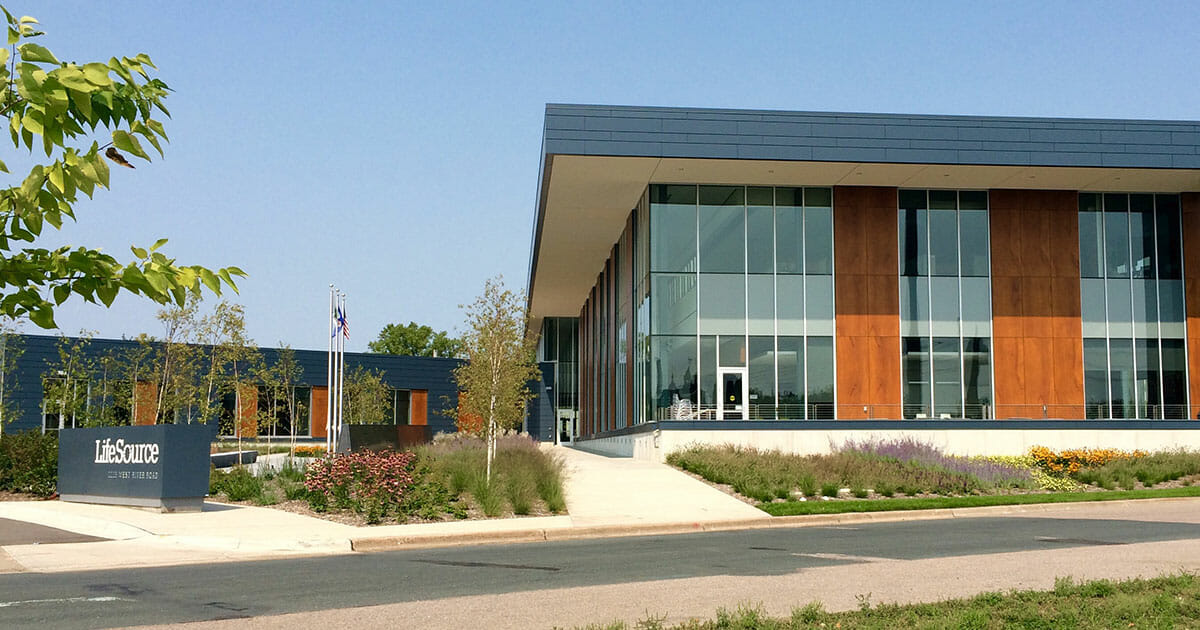
It’s a good way to give back, and as the old saying goes, “You never know whose life you could be saving,” I just think it’s a very responsible and accountable action, and a very easy action that we can do as human beings. It’s a good way to show our love and kindness to others and to the planet.
LifeSource has been a good foundation and a good source of guidance for my grieving process in being able to reach out to staff and volunteers who understand what it means to lose a loved one. Through that process, I have learned how a loved one can continue to live through organ donations, and I just think that’s a super-cool thing.
What Should We Know About the Rondo Community?
We have a wall which tells the story of Rondo, and it shares stories about the Rondo of today, but also talks about the different people of it – Somali, Karen, Oromo, Hmong – and, of course, the freeway which goes right through here.
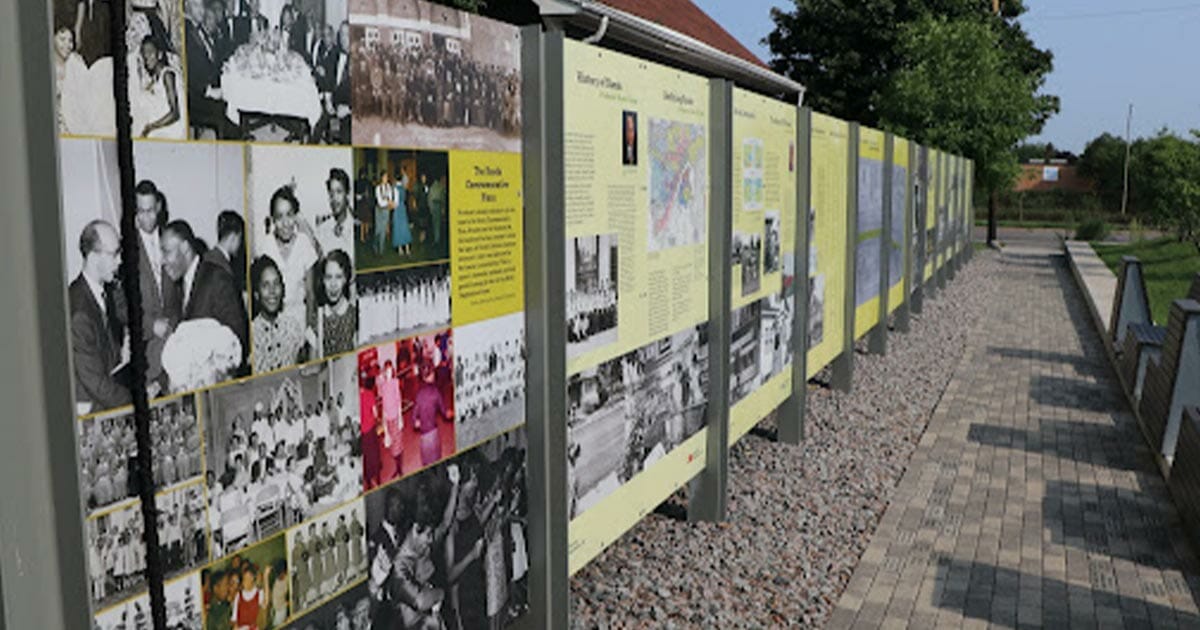
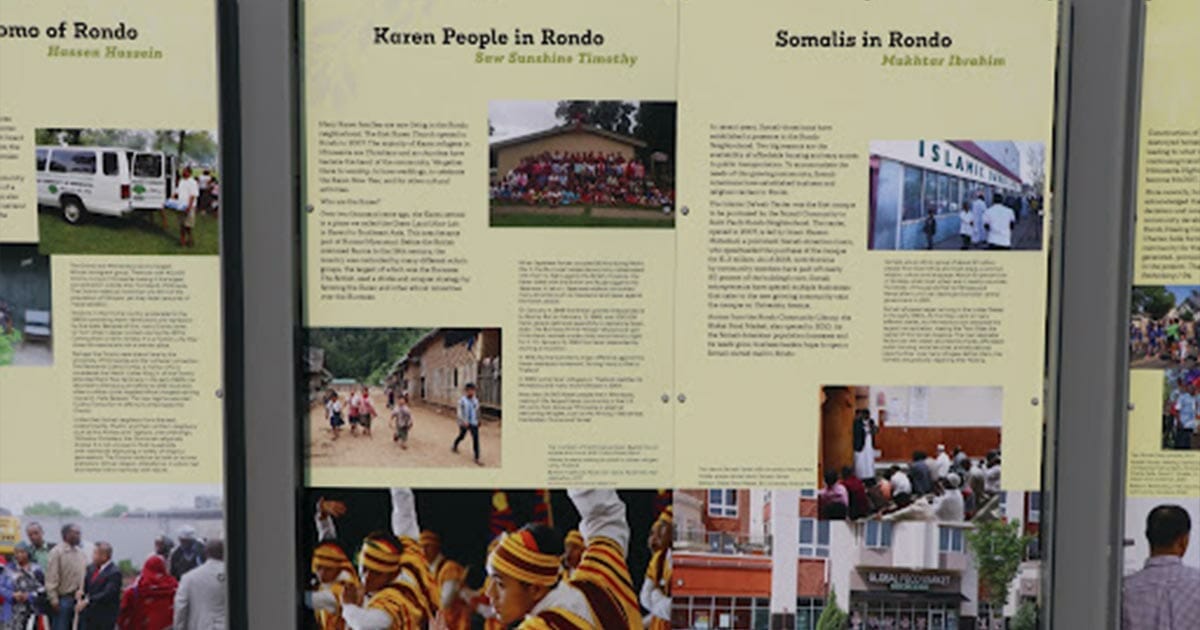
These are the streets of Rondo. Rondo goes from Lexington all the way to Marion. Right now we finally had our Dale Street bridge redone. Dale Street is the bridge of hope, and it’s going to be very, very beautiful. It’s a county road, and it took many years to convince the county, ‘We don’t just want a street or a bridge. We want something that represents the community.’ The Dale Street Bridge will have poetry on it. It will have images of Rondo. It’s kinda similar to the lite rail that came through the neighborhood. At one time, it was just called the Central Light Rail. I grew up on the other side of the freeway, which we call Saint Anthony.
The I-94 freeway was completed in 1968 and was built primarily through many working-class and Black neighborhoods. It cut right through Rondo. At one time the freeway was going to be right on street level, so the ministers of that time talked the government into lowering it, but the ministers also said, ‘We need bridges to keep our people together.’ So, at each of these eight bridges, you will find at least a church or a faith institution within the two or three block area.
The chimes represent the stress in Rondo of the freeway coming through. Rondo has what we call the Eight Bridges of Rondo. I like to call it Eight Living Bridges. It was part of the so-called ‘concession’ of the freeway. Before the highway, Rondo was the largest Black community in St. Paul. The spirit of Rondo lives differently, but still powerfully today.
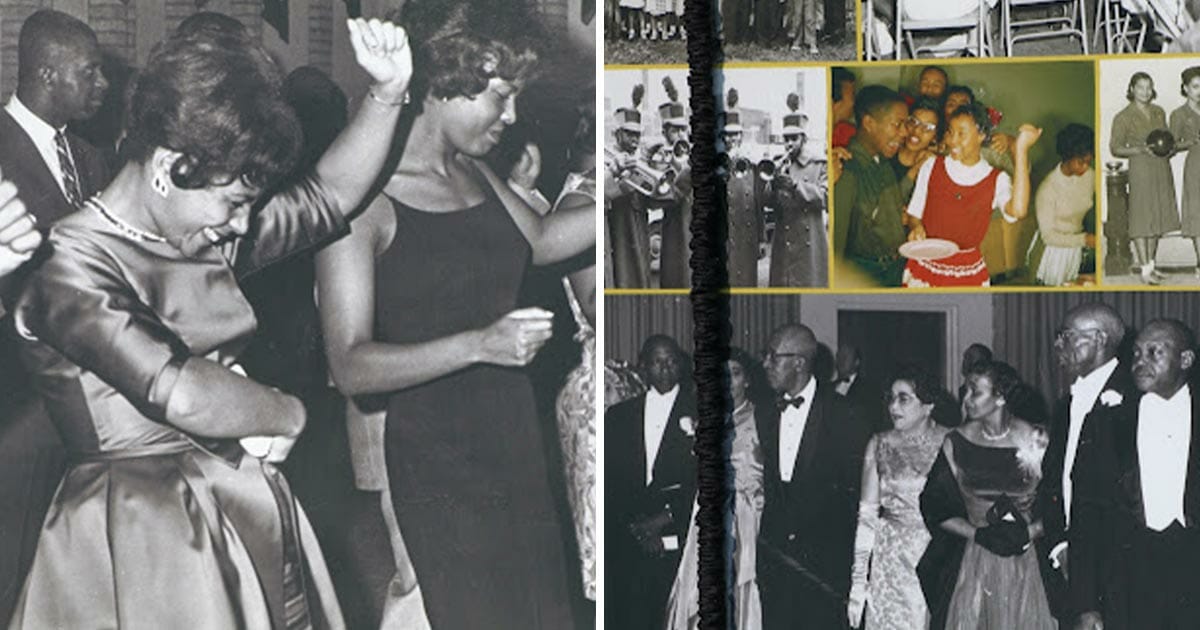
Some of the panels talk about redlining and how that redlining is still continuing today. There’s a photo of the destruction of people’s homes. Some people were forced out. A few years ago, Mayor Chris Coleman came and apologized to the community for the freeway coming through.
I think that most people know now that the freeway could’ve been like a mile north, instead of cutting through the neighborhood, destroying many homes.
This used to be a rich, vibrant community, and I would say the good news is it’s a new day, and people are working together. This is a very historical spot.
What’s the Significance of Gardens In A Community?
Before the freeway was constructed, we were able to put in many garden boxes, which were filled with collard greens, green beans, and good, healthy food.
Part of the role of gardening is bringing people together, particularly different cultures. This garden site is the Victoria Community Garden, and it’s probably the most traditional.
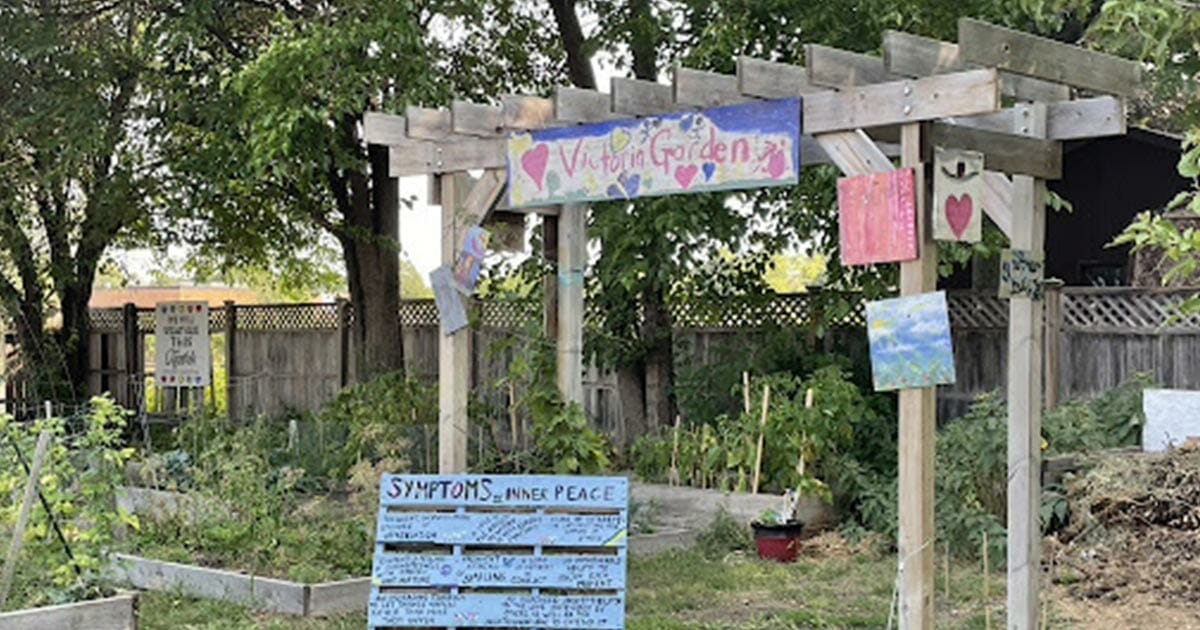
“I’m a gardener; I like playing in the soil. I like seeing things grow. I like working with other folks to grow food for people to think healthier. I like hanging out with animals, and I like good, warm weather.”
This garden is one of 8 community gardens that are a part of the Urban Farm and Garden Alliance. The Urban Farm’s main mission is to work for social justice. This particular site is like the acorn.
This garden is the smallest one. It’s a demonstration garden, but every Wednesday during the summer we have a children’s garden. We start the season by giving each child a small box that we call a salad box with soil and plants, and now those plants are ready for harvesting.
“I’m one of those who believes the green in all the gardens and the green spaces, is not just about the environment, but it’s about wealth, how we grow ourselves, and how we can restore Rondo.”
Many of the gardening boxes again, neighbors make themselves. Some people have pollinator gardens. Other folks are ready for some good green tomatoes. Fried green tomatoes. Some folks are doing some medicinal gardening, you got some broccoli going here.
“When I think of these vegetables I can go, one dollar, two dollar, three dollar, four dollar. This is wealth.”
People are saving money. We like MIssissippi Market, we like Trader Joes, but when we can just go outside and pick our own fresh stuff, it’s beautiful.
Back in 2010, we entered a contest for an orchard. We did alright, but we weren’t at the top. However, the city heard about it and they asked us if we wanted some trees, because they wanted to transplant some trees from Mounds Park. So we got 10 apple trees, and we divided them up in the community.
This space is the Peace Sanctuary garden.
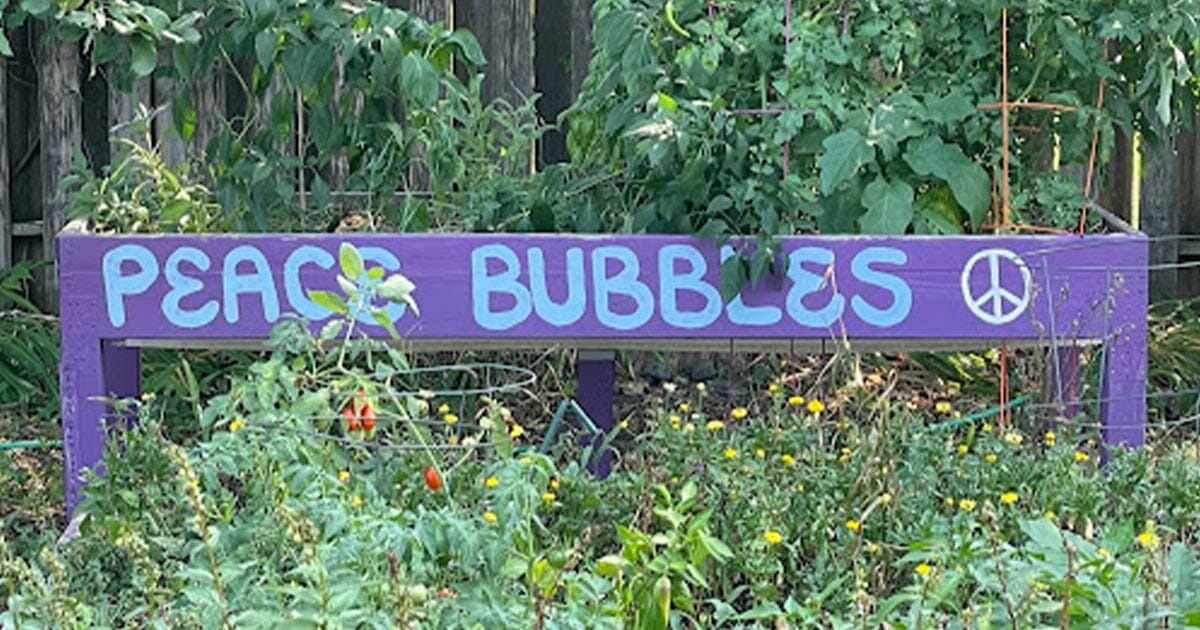
It got started back in 2004 by a group called AfroEqual and the Area Learning school which is now Gordon Parks HS. It’s an environmental learning space.
The purple box has the words Peace Bubbles written on it. I really, definitely, like bubbles instead of bullets.
What do you mean when you say you like bubbles instead of bullets?
I’m a peacemaker and I am a bubble-blower, too. What I love doing is blowing what I like to call “Peace Bubbles”.
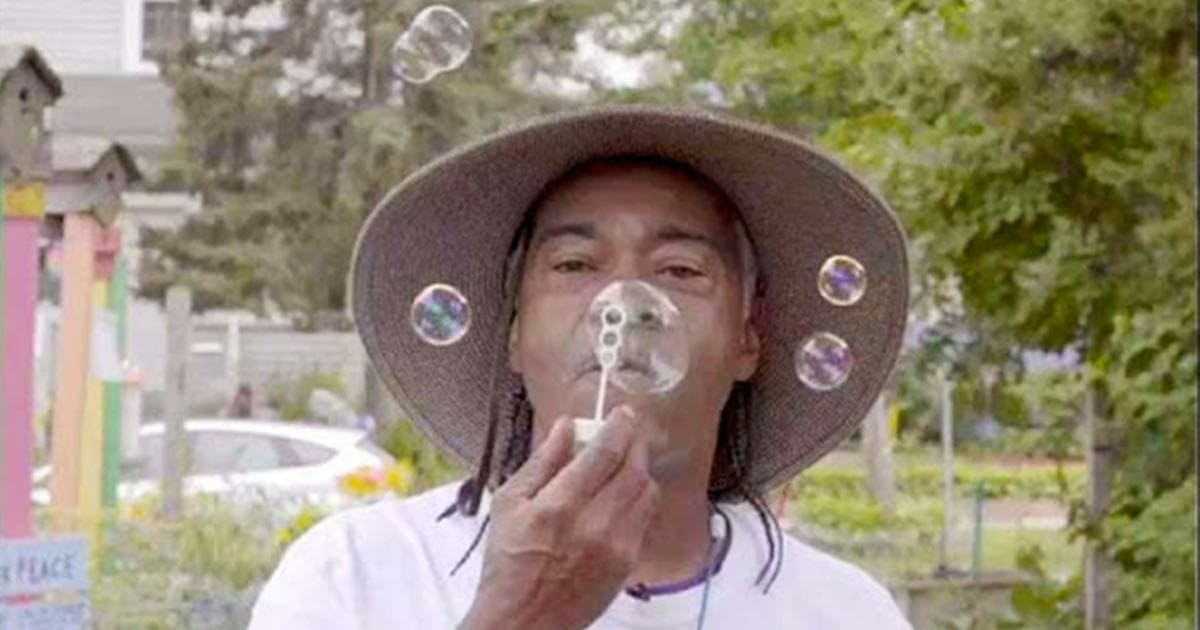
I started blowing bubbles while at Catholic Charities. I was in a meeting. I was bored and someone gave me a bubble pen. I just started blowing bubbles and I noticed little reactions from people. It made me happy to blow some bubbles. I keep bubbles with me at all times. If you ever go to an airport or a restaurant, wherever and you hear a little baby crying, just pull out some bubbles. The babies will become fascinated and quiet right down.
What Are Peace Poles and What Is Their Meaning for You?
Another one of my passions is peace poles. Peace poles are the wooden posts which say “May Peace Prevail on Earth” in many different languages. For me, peace poles are the rocket ship and the bubbles are the fuel for it. They kind of go hand in hand.
I was introduced to the peace poles by the McDonald sisters, siblings who became Nuns of the Order of Saint Joseph. Back then, , I was trying to engage different communities because of some violence that was happening. St. Paul did the first peace pole and it was actually at the St. Paul police station. At the time, people thought it was unbelievable that the police would participate in the community. Very shortly after that, within two months, we planted another one.
This piece of wood, I think, is like our spirit, and the different languages are our humanity. I went to an elementary school where we had a pole and I heard a little girl scream. I thought she was hurt, but she was pointing at a language that she could understand. It may have been in Arabic. It could have been in Hebrew, but she was like, I know that. That definitely taught me the power of peace polls. Minnesota is actually the Capitol of peace poles in our country with over 300,000 peace poles in the world globally.
About 10 to 15 years ago, the demographics started changing in our St. Paul neighborhoods, particularly in the high rises. So they use a peace pole to help people just say hi to each other. The tallest peace pole in the world is in the Southeast Como area of Minneapolis.
Peace poles are definitely my passion. Mary personally took a peace pole off to Utah, to a place called Best Friends Society. Mary started promoting the peace pole and telling Catholic Charities to get on the peace train. Catholic Charities has about eight or nine peace poles at their different sites. During hurricane Katrina, people around the world were sending us funds for peace poles. Mary led what she called a dream team. It was a caravan of seven to eight people, and every time we made a stop, we would plant one of the poles or we would give it to somebody. And after 18 months of going back and forth, we planted a peace pole down in Mississippi. We have peace poles all around the country and I know her spirit lives on indefinitely. That was all Mary. I salute her.
 Skip to main content
Skip to main content
